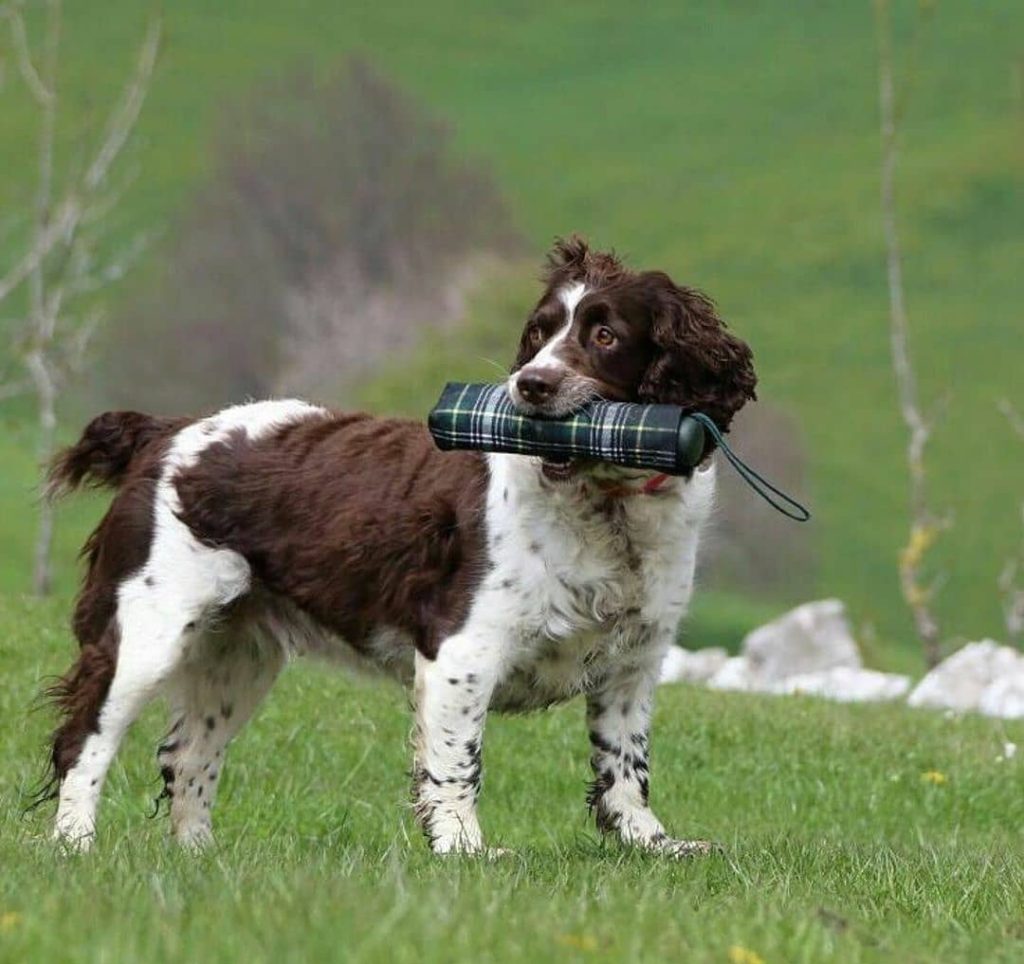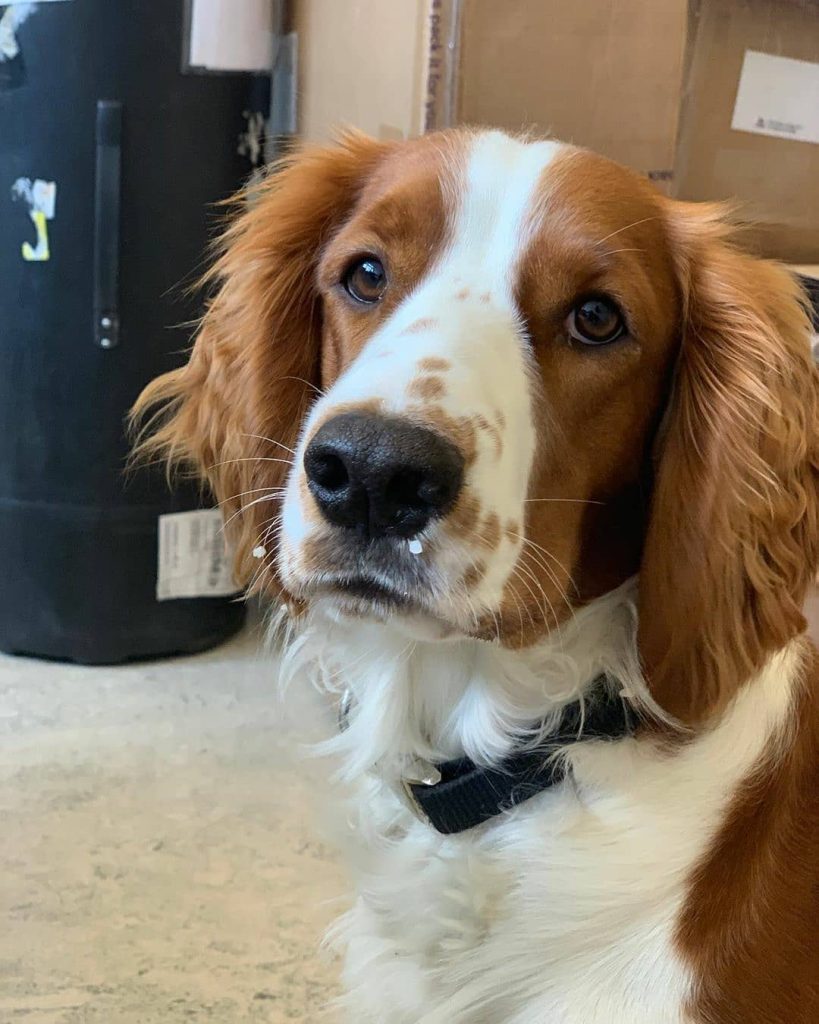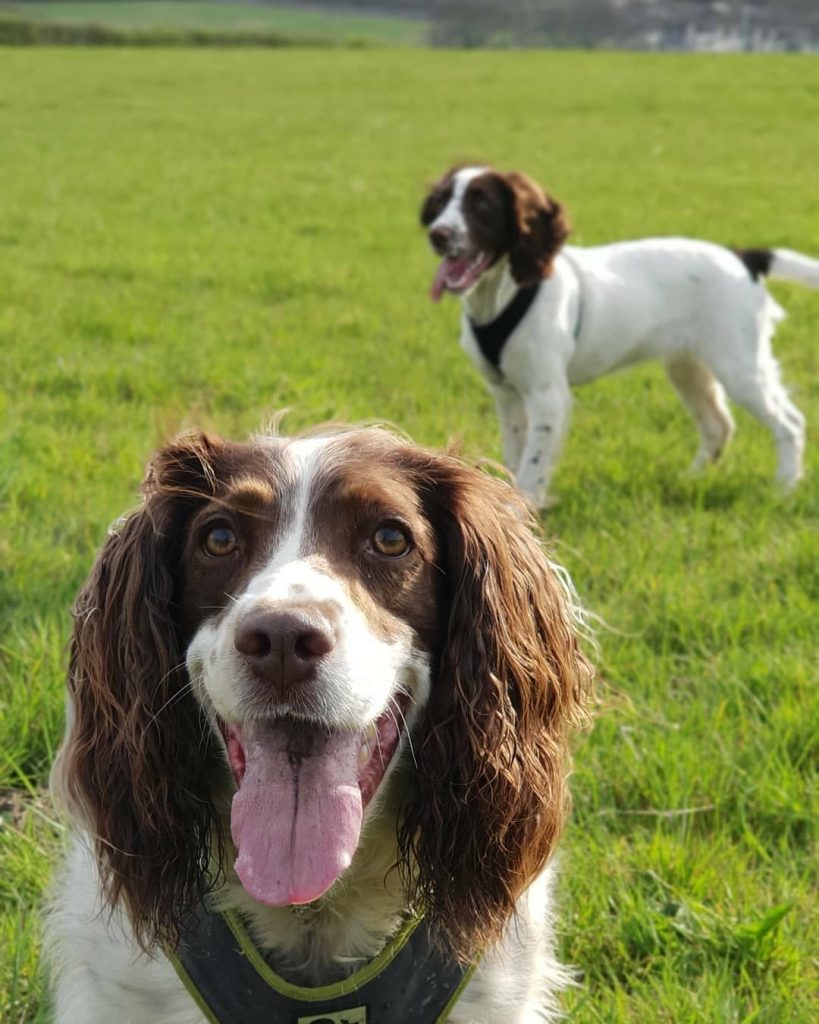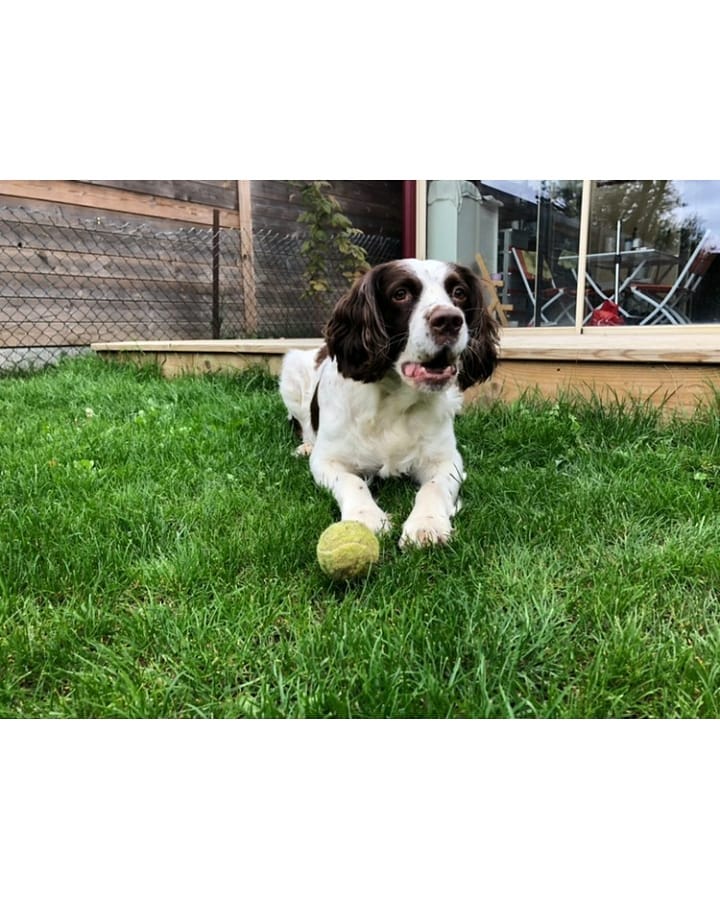
Mastering Springer Spaniel Training: A Comprehensive Guide
Training an English Springer Spaniel brings joy, challenges, and a unique bonding experience. These dogs, known for their boundless energy, intelligence, and affectionate nature, require a dedicated approach to training. This comprehensive guide aims to equip you with the knowledge and techniques to train your Springer Spaniel effectively, ensuring that you raise a well-behaved, happy, and healthy canine companion.
The Springer Spaniel is a breed that thrives on human companionship and physical activity. They are quick learners but can be headstrong, making consistent patient training crucial. Whether you are a first-time Springer Spaniel owner or an experienced dog trainer, this guide will provide insights into the breed’s specific needs and how to address them through practical training.
To embark on this training journey, it’s essential to understand the Springer Spaniel’s background. Initially bred for hunting, these dogs instinctively flush and retrieve the game. This trait can be both a challenge and an advantage in training. On the one hand, it means they can be easily distracted by scents and movements; on the other hand, their intelligence and eagerness to please make them responsive to training when engaged correctly.
In the following sections, we’ll explore various aspects of Springer Spaniel training, from getting started with a puppy to advanced training techniques and health considerations. Whether you want a well-mannered family pet, a skilled hunting companion, or a competitive show dog, this guide will provide a solid foundation for your Springer Spaniel’s training and development.
Also, study the following key aspects:
- How to Train a Springer Spaniel: Focus on positive reinforcement techniques such as treats, praise, and playtime to encourage desired behaviors. Springer Spaniels respond well to rewards and are more likely to repeat behaviors that are positively reinforced.
- Springer Spaniel Puppy Training: Start training early to establish good habits from the beginning. Socialization is crucial; expose your puppy to different people, animals, and environments to promote a well-rounded temperament.
- English Springer Spaniel Training: Given their hunting background, incorporate games and activities that utilize their natural instincts, like fetch and scent tracking, to keep training sessions engaging and relevant to their predispositions.
- Dog Behavior: Understand and address common behavioral issues such as jumping, barking, and chewing by providing consistent guidance and setting clear boundaries. Training should be consistent and adjusted according to the dog’s learning pace.
- Every Dog: Recognize that each Springer Spaniel has its own personality and learning style. Customizing your training approach to suit your dog’s individual needs can lead to more effective outcomes.
- Potty Training: Establish a routine and take your Springer Spaniel outside regularly, especially after meals and naps. Reward them for doing their business outside to reinforce this behavior.
- Cocker Spaniel Comparisons: While similar to the Springer Spaniel, Cocker Spaniels may have different training needs. It’s essential to understand the distinct characteristics of each breed, though many training principles apply broadly.
- Separation Anxiety: This breed is known for its attachment to its owners. Gradually acclimate your Springer Spaniel to being alone for short periods and increase the duration over time to mitigate separation anxiety.
- Behavioral Issues: Address any signs of aggression, fear, or anxiety early on. Professional help from a dog behaviorist or trainer might be necessary to correct these behaviors before they become entrenched.
Incorporating these key points into your training regimen will help address the unique challenges and leverage the inherent qualities of Springer Spaniels, facilitating a harmonious and rewarding relationship between you and your dog.
Getting Started with Your Springer Spaniel Puppy
Understanding the Right Age to Begin Training
Embarking on the training journey with a Springer Spaniel puppy is an exhilarating experience filled with opportunities for bonding and learning. The key to a successful start is knowing when to begin. Training should start when your puppy settles into their new home, typically around eight weeks. This early stage is crucial for imprinting good behaviors and setting the groundwork for future training.
During these initial weeks, focus on basic commands like ‘sit,’ ‘stay,’ and ‘come.’ It’s also the perfect time to introduce your puppy to their name and start house training. Springer Spaniels are intelligent and eager to please, making them receptive to early training efforts. However, their attention spans are short, so keep training sessions brief and engaging.

Socialization is another critical aspect of early training. Expose your Springer Spaniel puppy to different environments, sounds, people, and animals. This exposure helps them develop into well-adjusted and confident adult dogs. Remember, positive reinforcement is critical. Use treats, praise, and affection to reward your puppy for good behavior, reinforcing the learning process in a fun and rewarding way.
As you progress through these early stages, remember that patience, consistency, and positive reinforcement are your best tools. Your Springer Spaniel puppy is not just learning commands; they are also learning to trust and communicate with you.
Essential Training Equipment for Springer Spaniels
Equipping yourself with the right tools is crucial for practical Springer Spaniel training. Here’s a condensed list of essential training equipment:
- Collar and Leash: A comfortable collar and a sturdy 6-foot leash are fundamental for control and identification.
- Training Treats: Small, appealing, and healthy treats are essential for positive reinforcement.
- Clicker: This tool helps mark desired behaviors precisely during clicker training.
- Training Toys: Toys like tug ropes and fetch toys engage your dog’s instincts and can be used as rewards.
- Training Harness: A well-fitting harness is essential for dogs that tend to pull, ensuring comfort and control during walks.
- Long Line: Ideal for practicing commands at a distance, giving your dog freedom while maintaining control.
- Crate and Bedding: A crate serves as a personal, safe space for your dog, aiding in-house training and providing comfort.
Each piece of equipment should enhance the training experience, ensuring safety, comfort, and effective learning.
To complement the essential training equipment for Springer Spaniels, integrating specific Springer Spaniel advice into your approach can significantly enhance the training process. When training Springer Spaniels, remember that these energetic and intelligent dogs thrive on consistency, patience, and understanding. Springer Spaniel training tips often emphasize the importance of early socialization and obedience training to mold a well-behaved companion. Although English Springer Spaniels are easy to house train with the right approach, incorporating crate training from a young age can provide a secure environment for your English Springer Spaniel puppy and aid in this process. As natural gun dogs, Springer Spaniels have an inherent desire to please and engage in activities like retrieving, making them excellent candidates for advanced obedience or agility training.
For those looking to deepen the bond and communication with their Springer Spaniel pup, adopting the role of a Spaniel whisperer involves understanding and leveraging their breed-specific traits in training. Puppy obedience classes can be a fantastic way to start training your Springer in a structured environment while also socializing them with other dogs and people. Remember, the goal is not just to give your Springer commands but to make your Springer feel like an integral part of your family. Engaging them with interactive toys and practicing commands with a long line can help in reinforcing desired behaviors. Always look for opportunities to reward your Springer pup for good behavior, setting a foundation for a lifetime of companionship and mutual respect.
Critical Considerations in Training Springer Spaniel Puppies
Training Springer Spaniel puppies requires patience, consistency, and understanding of their unique traits. Springer Spaniels are known for their lively spirit and intelligence, which can make training both rewarding and challenging. Here are some key considerations:
- Positive Reinforcement: These puppies respond well to positive reinforcement. Use treats, praise, and play to encourage desired behaviors, creating a positive and encouraging learning environment.
- Consistency is Crucial: Maintain consistent rules and routines. Springer Spaniels benefit from knowing what to expect and what is expected of them. Consistency in commands, rewards, and corrections helps prevent confusion.
- Short, Engaging Sessions: Keep training sessions short and engaging to hold their attention. Their energetic nature makes them easily distracted, so focus on making each session enjoyable and productive.
- Socialization: Early socialization is vital. Expose them to various environments, sounds, people, and other animals to develop a well-rounded, confident dog.
Training a Springer Spaniel puppy is as much about building a solid bond as teaching commands.
The Breed’s Purpose and Its Impact on Training
Understanding the English Springer Spaniel’s historical role as a hunting dog is vital to their training. Originally bred to flush and retrieve game, these dogs possess an instinctual solid drive. This heritage plays a significant role in their training approach:
- Leverage Natural Instincts: Use their natural retrieving and scent-tracking abilities in training exercises. This makes learning more intuitive and enjoyable for them.
- Impulse Control: Training should also focus on controlling their instinctual impulses, ensuring they can stay focused and follow commands amidst distractions.
Acknowledging and utilizing these innate traits can significantly enhance the training process, making it more effective and aligned with their inherent characteristics.
Structuring Your Springer Spaniel’s Training Program

Introduction to the Push Drop Stick Method
A structured approach is vital for effectively training your Springer Spaniel. The Push Drop Stick method is a comprehensive technique that helps develop discipline and focus. This method involves three key steps:
- Push: Encourage your dog to move towards a treat or object.
- Drop: Train your dog to drop into a sit or down position upon command.
- Stick: Teach your Springer Spaniel to stay in place until released.
This method instills basic obedience and enhances impulse control, an essential skill for this active and intelligent breed.
Incorporating the Push Drop Stick method into your training regimen offers a structured way to expose your English Springer Spaniel to essential commands while catering to their intelligence and energy levels. This technique not only lays the groundwork for training Spaniels but also prepares them for the next training challenges they will face. By engaging with this method, you not only work on obedience but also on developing a deeper bond with your dog. It’s a proactive approach to ensure that your Springer Spaniel understands expectations and can follow commands reliably, which is crucial given the English Springer Spaniel lifespan, often spanning over a decade. During this time, maintaining consistent training and reinforcement is key to a fulfilling and harmonious relationship. The Push Drop Stick method, therefore, is not just about immediate obedience but about setting a foundation for lifelong learning and adaptation, ensuring your Springer Spaniel remains well-behaved and responsive throughout its life.
Week-by-Week Training Guide for Your Springer Spaniel
Embarking on a week-by-week training guide can provide a structured approach to developing your Springer Spaniel’s skills and behaviors. Here’s an overview of what to focus on each week:
Week 1 – Foundational Training and Husbandry Exercises
In the first week, concentrate on foundational commands like ‘sit,’ ‘stay,’ and ‘come.’ Begin house training and crate training as well. Introduce your puppy to grooming and handling exercises, critical for their comfort with future grooming and veterinary visits.
Week 2 – Building on Basic Training Skills
Continue reinforcing the basic commands from week 1. Start introducing new commands such as ‘heel’ and ‘leave it.’ Increase socialization efforts, exposing your puppy to different environments, people, and other pets.
Week 3 – Advancing Training Techniques
In week 3, challenge your Springer Spaniel with longer durations and distances in their commands. Begin incorporating distractions to test and strengthen their focus and obedience.
Week 4 – Enhancing Training with New Challenges
This week, introduce more complex training activities. Consider beginning simple agility exercises or more advanced obedience training to engage your Springer Spaniel’s mind and body.
Week 5 – Consolidating Training Knowledge
Use this week to solidify the training concepts learned so far. Practice in various settings with different levels of distractions to ensure your dog’s skills are reliable in any situation.
Week 6 – Refining Skills and Responses
Focus on refining and perfecting the commands and behaviors. Work on tightening the recall command and ensuring consistent obedience across different scenarios.
Week 7 – Advanced Training and Socialization
Start advanced training techniques and further socialization. Introduce more complex tasks and continue exposing your Springer Spaniel to diverse environments and situations.
Week 8 – Preparing for Continued Training
The final week of this guide is about evaluating progress and planning future training goals. Assess your Springer Spaniel’s strengths and areas for improvement, setting the stage for ongoing training and development.
Next Steps in Your Springer Spaniel’s Training Journey
After the initial eight-week training period, your Springer Spaniel should have a solid foundation of basic commands and behaviors. However, training is an ongoing process that continues throughout your dog’s life. Here are some steps to guide you in the ongoing journey of training your Springer Spaniel:
- Advance Training Techniques: As your Springer Spaniel masters basic commands, gradually introduce more complex training. This could include advanced obedience, agility training, or specialized tasks like scent work, which aligns with their natural abilities.
- Consistent Practice and Reinforcement: Regular practice is crucial. Continue to reinforce learned behaviors in different settings and situations. Consistency ensures that your dog doesn’t forget the training and helps reinforce your bond.
- Socialization and Exposure: Keep exposing your dog to new environments, people, and other animals. Ongoing socialization is essential for maintaining their adaptability and confidence.
- Mental Stimulation: Springer Spaniels are intelligent and active dogs. Engage them in activities that challenge their minds, like puzzle toys, interactive games, and regular playtime. Mental stimulation is as essential as physical exercise.
- Health and Fitness: A healthy dog is more receptive to training. Ensure your Springer Spaniel gets adequate exercise, a balanced diet, and regular health check-ups.
- Join Training Classes or Clubs: Consider joining obedience classes, agility clubs, or other dog training groups. These can provide structured training environments and opportunities for your dog to socialize and learn in a group setting.
- Set New Goals: Always have a training goal in mind, whether improving a specific skill, learning a new trick, or preparing for a dog sports competition. Goals keep training focused and rewarding.
Remember, the training journey with your Springer Spaniel is a continuous path of learning, bonding, and growing together. Embrace this journey with patience, dedication, and love, and you will nurture a well-trained, happy, and loyal companion.
Engaging with Fun and Interactive Training Apps

In today’s digital age, incorporating technology into your Springer Spaniel training can be fun and effective. Training apps offer a unique way to enhance traditional training methods. Here are some ways these digital tools can benefit you and your dog:
- Structured Training Programs: Many apps provide structured training programs, breaking down complex training into manageable, step-by-step processes. This can be especially helpful for new dog owners.
- Tracking Progress: Apps often feature progress tracking, allowing you to see how your dog improves over time. This can be motivating and help you identify areas that need more focus.
- Variety of Exercises: With various exercises and games, apps can keep training fresh and exciting for your Springer Spaniel. This variety is crucial in maintaining their interest and enthusiasm.
- Convenience: Apps offer the convenience of training guidance at your fingertips. You can access training tips, videos, and support anytime, anywhere, making fitting training into your busy schedule more manageable.
- Community and Support: Some apps provide access to a community of dog owners and trainers. This can be a valuable resource for sharing experiences, seeking advice, and offering support.
- Personalization: Apps can often be tailored to your dog’s age, breed, and training level, providing a more personalized training experience.
Using training apps with traditional training methods can enrich the training experience for you and your Springer Spaniel. It’s a modern approach that combines technology with the timeless bond between a dog and its owner.
The Role of Digital Tools in Puppy Training
Digital tools have revolutionized puppy training, offering an accessible and interactive approach that complements traditional methods. They serve as an invaluable resource for new and experienced dog owners, providing guidance, reinforcement techniques, and insights into canine behavior. By integrating these tools into your Springer Spaniel’s training regimen, you can enhance the learning experience, ensuring it’s engaging, consistent, and adaptable to your puppy’s evolving needs. Embracing these modern solutions not only aids in practical training but also strengthens the bond between you and your pet through shared, interactive learning experiences.
Comprehensive Care for Your Springer Spaniel
Grooming Essentials for English Springer Spaniels
Comprehensive care for your Springer Spaniel extends beyond training to include proper grooming, vital for their health and well-being. These dogs have medium-length coats that require regular brushing to prevent matting and to remove debris and loose hair. Weekly brushing sessions also allow checking for any skin issues or parasites.
Ear care is particularly important for Springer Spaniels because their floppy ears can trap moisture and lead to infections. Regular ear cleaning and inspection are essential.
Maintaining their nail length with routine trimming is crucial to avoid discomfort and potential walking issues. Dental care, through regular teeth brushing or dental chews, is essential to prevent oral diseases.
Providing these grooming essentials ensures your Springer Spaniel looks their best and stays healthy, complementing your training efforts with overall well-being.
Health Considerations in Springer Spaniel Training

Training your Springer Spaniel isn’t just about teaching commands and behaviors; it’s also about being mindful of their health. Here are some important health considerations to keep in mind during training:
- Regular Vet Check-Ups: Regular veterinary visits are crucial for monitoring your Springer Spaniel’s health. Vets can provide vaccinations, health screenings, and advice on preventing common health issues.
- Diet and Nutrition: A balanced diet is essential for your dog’s health and energy. Ensure your Springer Spaniel gets the right amount of nutrients, and adjust their diet according to age, size, and activity level.
- Exercise Needs: Springer Spaniels are energetic and require regular exercise to maintain physical fitness. Tailor your dog’s exercise regimen to their age and health status. Over-exercising a young puppy or an older dog with joint issues can be harmful.
- Mental Health: Mental health is just as important as physical health. Training sessions, playtime, and social interactions contribute to your dog’s mental well-being, helping prevent anxiety and depression.
- Recognizing Signs of Discomfort: During training, be alert to signs of discomfort or pain, such as reluctance to perform specific tasks. This could indicate underlying health issues.
- Joint Health: As Springer Spaniels are prone to joint problems like hip dysplasia, incorporate low-impact exercises and consider joint supplements as your vet recommends.
- Weight Management: Maintain a healthy weight to reduce the risk of health problems. Obesity can lead to joint issues, diabetes, and other complications.
You can ensure a happy, healthy, and well-trained companion by integrating these health considerations into your Springer Spaniel’s training and daily routine.
Common Health Issues and Prevention
Springer Spaniels, like all breeds, are susceptible to specific health issues. Awareness of these and taking preventive measures is crucial to their care. Here are some common health concerns for Springer Spaniels:
- Ear Infections: Springer Spaniels are prone to ear infections due to their floppy ears. Regular cleaning and checking for signs of infection can help prevent this issue.
- Hip Dysplasia: This genetic condition, common in many dog breeds, affects the hip joints. Maintaining a healthy weight and providing joint supplements can help mitigate its impact.
- Eye Conditions: Springer Spaniels can suffer from various eye problems, including Progressive Retinal Atrophy. Regular eye exams are essential for early detection and treatment.
- Skin Allergies: They may develop skin allergies, leading to discomfort and infections. Identifying and avoiding allergens, along with proper skin care, is essential.
- Autoimmune Diseases: The breed can be susceptible to autoimmune disorders. While these can’t always be prevented, early detection and treatment can manage their impact.
The Importance of Insurance and Wellness Plans for Pets

Investing in insurance and wellness plans for your Springer Spaniel is a proactive step towards ensuring their long-term health and well-being. These plans can provide peace of mind by covering unexpected veterinary costs, which can be substantial, especially in the case of accidents or chronic illnesses. Wellness plans often include routine care, such as vaccinations and regular check-ups, essential for preventing diseases and identifying health issues early on. By securing these plans, you’re safeguarding your financial stability and prioritizing your beloved pet’s health, ensuring they receive the best possible care throughout their life.
Final Thoughts on Training Your Springer Spaniel
Training your Springer Spaniel is a rewarding journey that strengthens your bond and enhances your well-being. Remember, patience, consistency, and understanding are key. Embrace each step of this journey with love and dedication, and you’ll have a loyal, well-behaved companion by your side.
